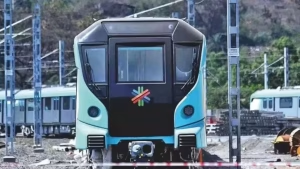Context:

Prime Minister Narendra Modi inaugurated the final pha se of Mumbai’s first fully underground Metro Line—Aqua Line 3, marking a major milestone in India’s urban transport infrastructure.
Key Highlights / Details:
- Project Overview:
- Metro Line 3 (Aqua Line) connects Aarey (north Mumbai) to Colaba (south Mumbai).
- The line stretches 33.5 km, making it India’s longest underground metro corridor.
- It aims to reduce road congestion and travel time, providing a seamless link across Mumbai’s busiest business and residential hubs.
- Route and Infrastructure:
- The line covers 27 stations, all underground.
- Total stretch spans around 12.1 km from Acharya Atre Chowk to Cuffe Parade in the initial phase.
- Once fully operational, it will connect key locations like Bandra-Kurla Complex, Mahalaxmi, Worli, and Churchgate.
- Around 280 train trips will be deployed daily to manage high ridership.
- Strategic and Economic Importance:
- Expected to cut travel time by over 50% between North and South Mumbai.
- The project will ease traffic congestion and reduce vehicular emissions, supporting the city’s clean mobility goals.
- Enhances last-mile connectivity with other metro lines and suburban rail networks.
- Symbolizes progress in urban infrastructure modernization and sustainable transport planning.
- Implementing Agencies:
- Executed by the Mumbai Metro Rail Corporation Limited (MMRCL).
- Funded through loans from Japan International Cooperation Agency (JICA).
- Incorporates advanced tunnelling and safety technology, with a focus on minimizing surface disruption.




